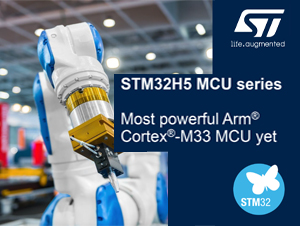The IoT is getting smarter. Companies are incorporating artificial intelligence—in particular, machine learning—into their Internet of Things applications and seeing capabilities grow, including improving operational efficiency and helping avoid unplanned downtime.
WITH a wave of investment, a raft of new products, and a rising tide of enterprise deployments, artificial intelligence is making a splash in the Internet of Things (IoT). Companies crafting an IoT strategy, evaluating a potential new IoT project, or seeking to get more value from an existing IoT deployment may want to explore a role for AI.
The AI key to unlock IoT potential
Artificial intelligence is playing a growing role in IoT applications and deployments, a shift apparent in the behavior of companies operating in this area. Venture capital investments in IoT start-ups that are using AI are up sharply. Companies have acquired dozens of firms working at the intersection of AI and IoT in the last two years. And major vendors of IoT platform software are now offering integrated AI capabilities such as machine learning-based analytics.
AI is playing a starring role in IoT because of its ability to quickly wring insights from data. Machine learning, an AI technology, brings the ability to automatically identify patterns and detect anomalies in the data that smart sensors and devices generate—information such as temperature, pressure, humidity, air quality, vibration, and sound. Companies are finding that machine learning can have significant advantages over traditional business intelligence tools for analyzing IoT data, including being able to make operational predictions up to 20 times earlier and with greater accuracy than threshold-based monitoring systems. And other AI technologies such as speech recognition and computer vision can help extract insight from data that used to require human review.
The powerful combination of AI and IoT technology is helping companies avoid unplanned downtime, increase operating efficiency, enable new products and services, and enhance risk management.
Avoiding costly unplanned downtime
In a number of sectors, unplanned downtime resulting from equipment breakdown can cause heavy losses.
Predictive maintenance—using analytics to predict equipment failure ahead of time in order to schedule orderly maintenance procedures—can mitigate the damaging economics of unplanned downtime. In manufacturing predictive maintenance can reduce the time required to plan maintenance by 20–50 percent, increase equipment uptime and availability by 10–20 percent, and reduce overall maintenance costs by 5–10 percent.
Because AI technologies—particularly machine learning—can help identify patterns and anomalies and make predictions based on large sets of data, they are proving to be particularly useful in implementing predictive maintenance.
Increasing operational efficiency
AI-powered IoT can do more than help avoid unplanned downtime. It can also help improve operational efficiency. This is due in part to the power of machine learning to generate fast and precise predictions and deep insights—and to AI technologies’ ability to automate a growing variety of tasks.
For example, for Hershey, managing the weight of their products during the production process is critical: Every 1 percent improvement in weight precision can mean more than $500,000 in savings for a 14,000-gallon batch of product such as Twizzlers. The company used IoT and machine learning to significantly reduce weight variability during production. Data is captured and analyzed by the second, and weight variability can be predicted by machine learning models, enabling 240 process adjustments per day, compared to just 12 per day before the ML-powered IoT solution was installed.
AI-based prediction is also helping Google cut 40 percent of data center cooling costs. The solution, trained on data from sensors in the facility, predicts temperature and pressure over the next hour to guide actions for limiting power consumption.
Machine learning produced insights that persuaded one shipping fleet operator to take a counter intuitive action that saved them big money. Data collected from ship-board sensors was used to identify the correlation between the amount of money spent on cleaning the ships’ hulls and fuel efficiency. The analysis showed that by cleaning their ships hulls twice a year rather than every two years—and thereby quadrupling their cleaning budget—they would end up saving $400,000 due to greater fuel efficiency.
Enabling new and improved products and services
IoT technology coupled with AI can form the foundation of improved and eventually entirely new products and services as well. For instance, for GE’s drone and robot-based industrial inspection services, the company is looking to AI to automate both navigation of inspection devices and identification of defects from the data captured by them. This could result in safer, more precise, and up to 25 percent cheaper inspections for the client.
Meanwhile, Rolls-Royce aims to soon introduce a new offering featuring IoT-enabled airplane engine maintenance services. The company plans to use machine learning to help it spot patterns and identify operational insights that will be sold to airlines. And automotive manufacturer Navistar is looking to machine learning analysis of real-time connected vehicle data to enable a new revenue stream, in vehicle health diagnostics and predictive maintenance services. According to Navistar technology partner Cloudera, these services have helped cut downtime for nearly 300,000 vehicles by up to 40 percent.
Enhancing risk management
A number of applications pairing IoT with AI are helping organizations better understand and predict a variety of risks as well as automate for rapid response, enabling them to better manage worker safety, financial loss, and cyber threats.
For instance, Fujitsu has piloted the use of machine learning to analyze data from connected wearable devices to estimate its factory workers’ potentially threatening heat stress accumulated over time. Banks in India and North America have begun evaluating AI-enabled real-time identification of suspicious activities from connected surveillance cameras at ATMs. Vehicle insurer Progressive is using machine learning analysis of data from connected cars to accurately price its usage-based insurance premiums and thus better manage underwriting risk. And the city of Las Vegas has turned to a machine learning solution to secure its smart city initiatives, aimed at automatically detecting and responding to threats in real time.
Implications for enterprises
For enterprises across industries, AI has the potential to boost the value created by IoT deployments, enabling better offerings and operations to give a competitive edge in business performance.
Executives contemplating new IoT-based projects should be aware that machine learning for predictive capabilities is now integrated with most major horizontal (in other words, general-purpose) and industrial IoT platforms, such as Microsoft Azure IoT, IBM Watson IoT, Amazon AWS IoT, GE Predix, and PTC ThingWorx.
A growing number of turnkey, bundled, or vertical IoT solutions take advantage of AI technologies such as machine learning. For instance, for connected-car use cases, BMW’s CarData platform gives access to data shared by vehicle owners and AI capabilities from IBM Watson IoT. In consumer products and retail, a number of replenishment automation and optimization solutions use machine learning to predict demand and optimize inventory levels. Providers of telematics solutions for the auto insurance industry are integrating machine learning to create more accurate risk models and predict claims behavior.
It may be possible to use AI technology to wring more value from IoT deployments that were not designed with the use of AI in mind. For instance, a Hungarian oil and gas company applied machine learning to sensor data that was already being collected during diesel fuel production. The analysis allowed the company to more accurately predict the fuel’s sulphur content and helped identify process improvements that are now saving the company more than $600,000 per year. The major horizontal and industrial IoT platforms—which enterprises may already be using—are offering new AI-based capabilities that might help boost the value of existing deployments.
The future of IoT is AI
In an IoT situation, machine learning can help companies take the billions of data points they have and boil them down to what’s meaningful. The general premise is the same as in the retail applications — review and analyzes the data you’ve collected to find patterns or similarities that can be learned from so that better decision can be made. IoT also generates Big Data, but AI is only the technology that makes those Big Data useful and meaningful for an industry. A reciprocally beneficial coexistence occurs between IoT and AI technologies. There are tons of domains and business niches, which can reap the advantages of the coexistence of both technologies. It’s time to let the machines point out where the opportunities truly are.











